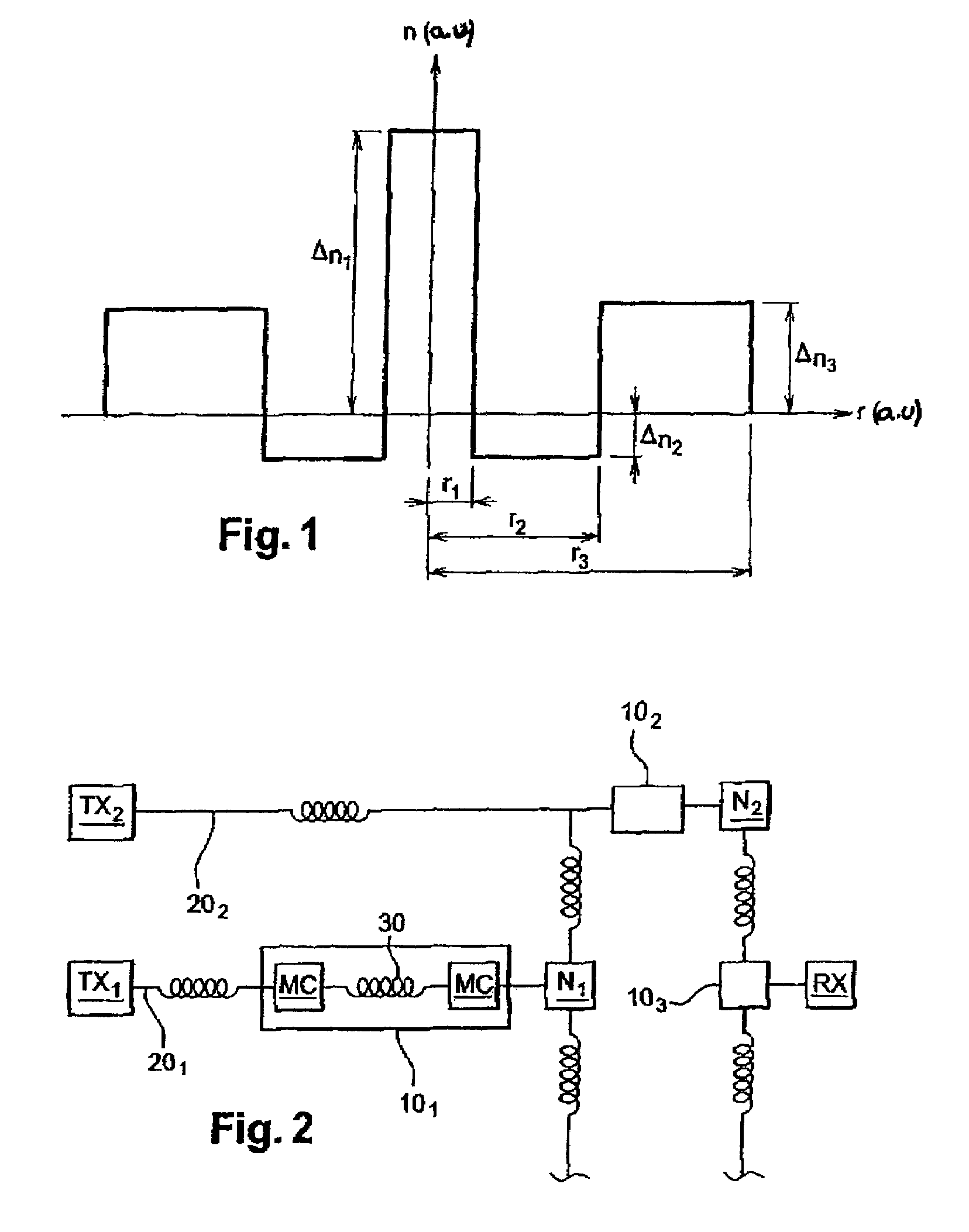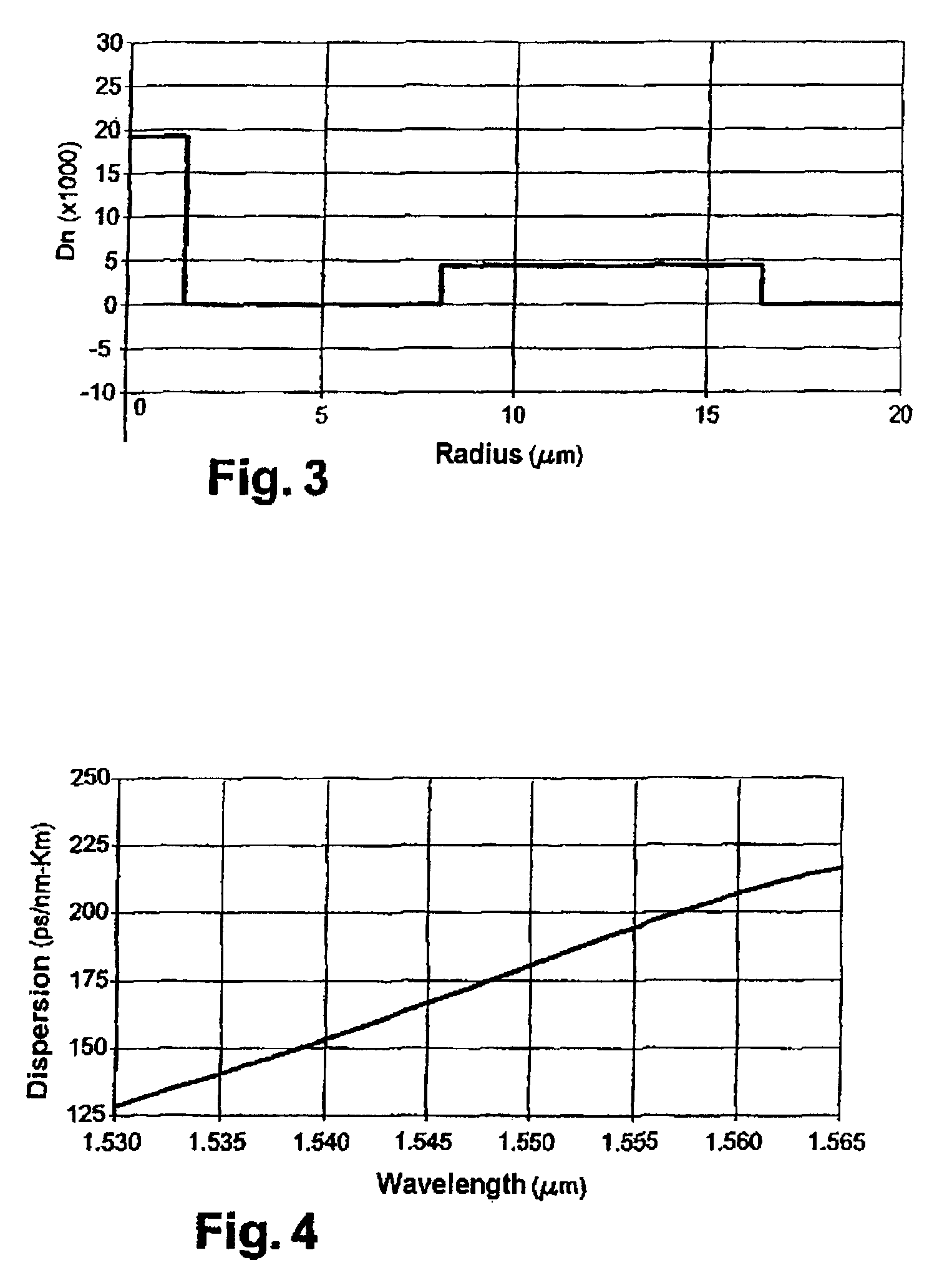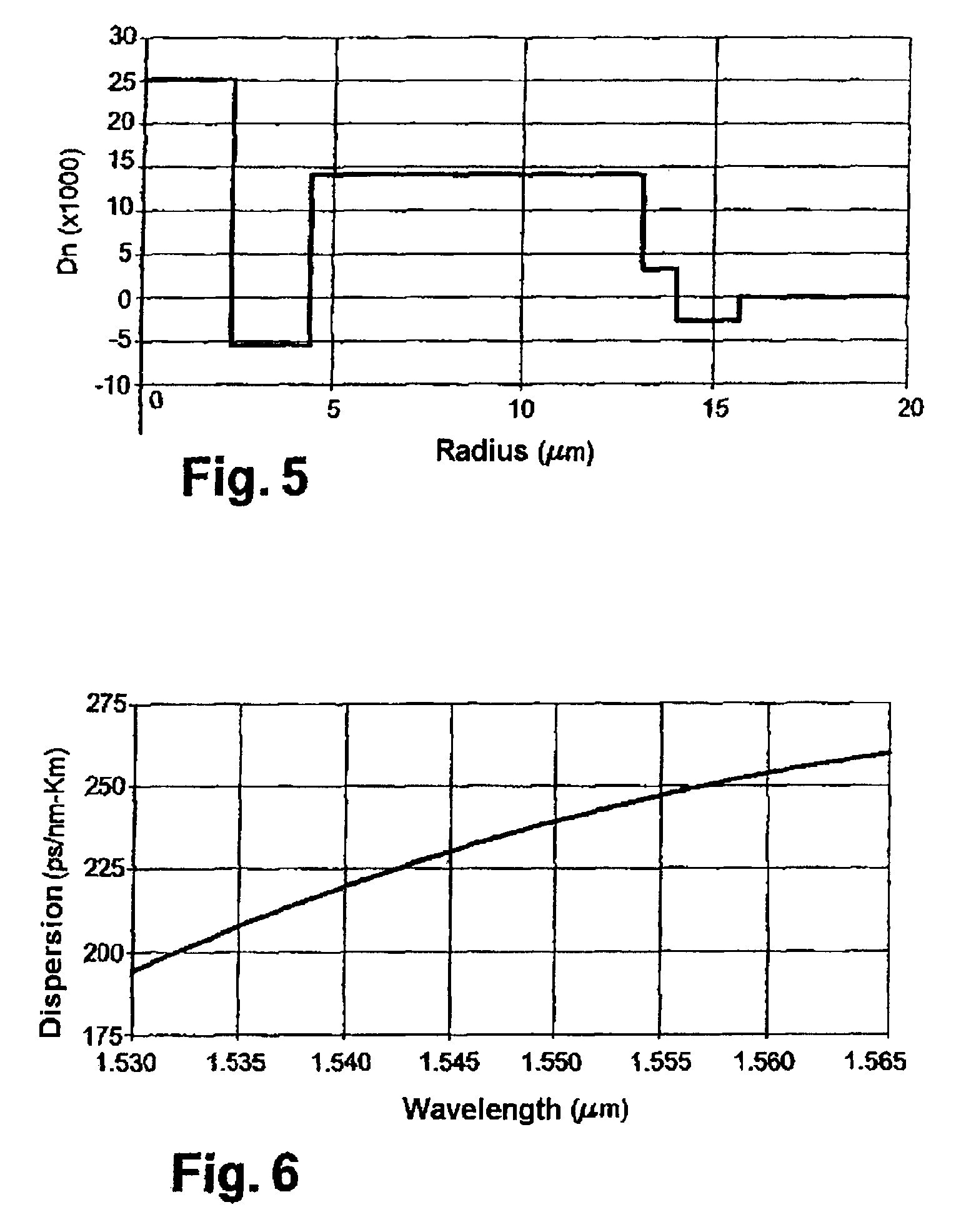Compensating fiber for cumulated chromatic dispersion and chromatic dispersion slope
a technology of cumulated chromatic dispersion and fiber, applied in the field of optical fiber transmission, can solve the problems of reducing the error rate at the receiver, ssmf causing high losses with respect to the quantity of dispersion produced, and not being adapted for offsetting
- Summary
- Abstract
- Description
- Claims
- Application Information
AI Technical Summary
Benefits of technology
Problems solved by technology
Method used
Image
Examples
Embodiment Construction
[0048]To offset the overcompensation of cumulated chromatic dispersion and chromatic dispersion slope in an optical transmission line section without incurring high losses, the invention proposes the use of a multimode compensating optical fiber having a particular index profile. Since overcompensation leads to negative cumulated chromatic dispersion and negative cumulated chromatic dispersion slope at the end of the line, the inventive fiber, for a high order mode, exhibits positive chromatic dispersion and positive chromatic dispersion slope with a Figure of Merit of more than 200 ps / nm / dB.
[0049]The fact that the dispersion compensating fiber is used in a transmission mode other than the fundamental mode, makes it possible for the fiber, at the wavelengths under consideration, to exhibit positive chromatic dispersion and positive chromatic dispersion slope with a high Figure of Merit.
[0050]FIG. 1 illustrates an index profile for a dispersion compensating fiber of the invention. Th...
PUM
 Login to View More
Login to View More Abstract
Description
Claims
Application Information
 Login to View More
Login to View More - R&D
- Intellectual Property
- Life Sciences
- Materials
- Tech Scout
- Unparalleled Data Quality
- Higher Quality Content
- 60% Fewer Hallucinations
Browse by: Latest US Patents, China's latest patents, Technical Efficacy Thesaurus, Application Domain, Technology Topic, Popular Technical Reports.
© 2025 PatSnap. All rights reserved.Legal|Privacy policy|Modern Slavery Act Transparency Statement|Sitemap|About US| Contact US: help@patsnap.com



